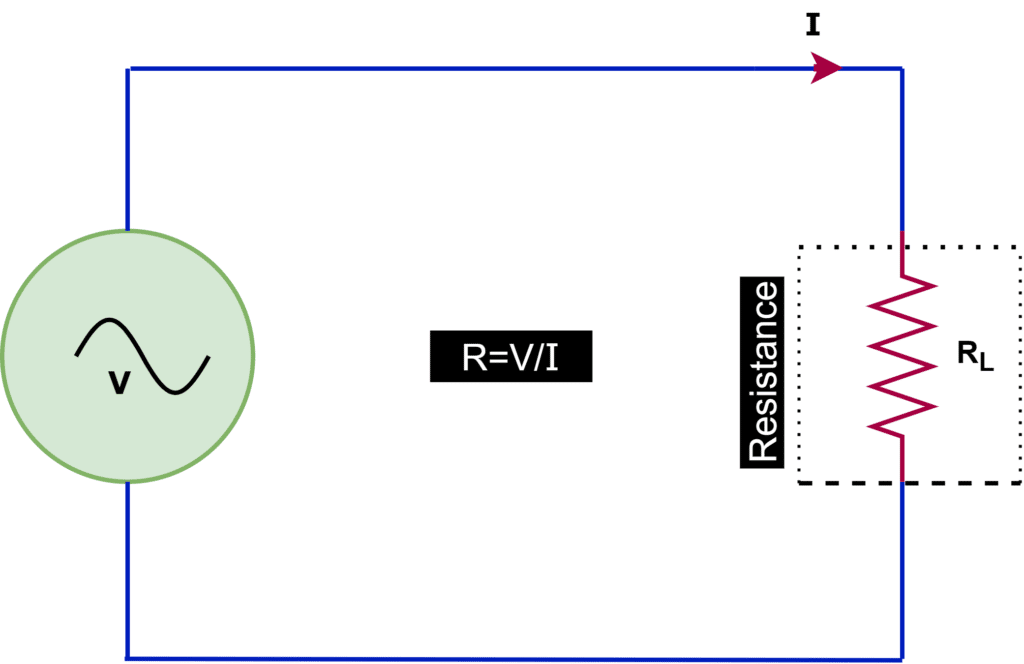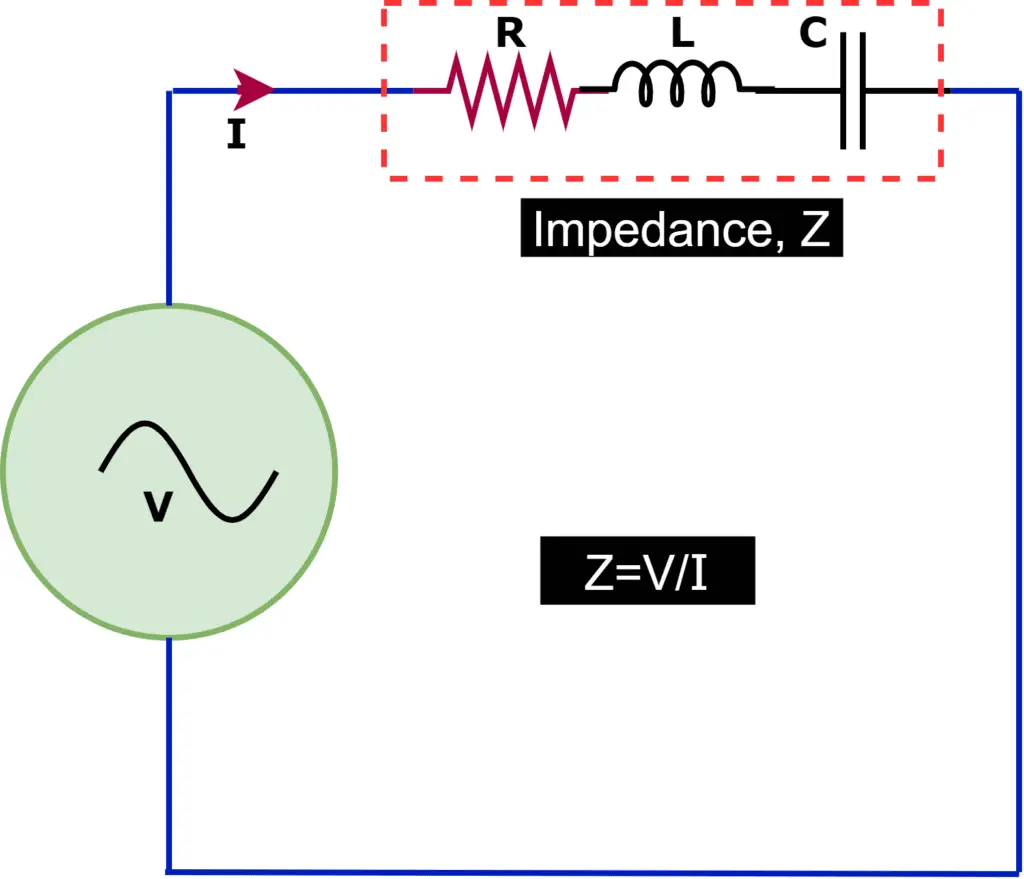Resistance and Impedance are two important parameters to be measured in an electronic circuit to determine other electric parameters such as the voltage across the components in the circuit or the amount of current flowing across different components in an electronic circuit. Resistance of an electronic circuit is measured from the resistors present in the circuit. While the impedance is measured across the capacitors, inductors, or resistors in the circuit.
In this article, we will discuss the major differences between resistance and impedance in an electrical or electronic circuit, starting with their basic definition.
What is Resistance?
Resistance is an electric parameter defined as the opposing force offered to the DC or AC current flowing in a given circuit. Resistance is a phenomenon that occurs in circuits with direct and alternating currents flowing through them. The resistance in a circuit is denoted by the letter ‘R’.
A resistor has no imaginary or complex parts, it has only a purely real number value. The unit of measurement of resistance is ohms. The resistance remains unchanged even when there is a change in frequency applied across the circuit. Since the resistance is a real value, it is a scalar quantity with only magnitude and no direction or phase difference. One way of determining the resistance of a circuit is by using the following expression:

Where R is the resistance of the circuit, ρ is the resistivity of the conducting material, l is the length of the conducting wire, and A is the area of the cross-section of the conducting wire.
Another method to calculate the resistance offered in an electric circuit is by using Ohm’s law:

Where I is the current through the circuit, V is the voltage in the circuit, and R is the resistance of the circuit.
The connection of the resistance in an electric circuit is shown in the below picture.

What is impedance?
Impedance is an electric parameter defined as the opposing force offered to alternating current (AC) flowing in a given circuit. Impedance is a phenomenon that occurs in circuits with only alternating currents flowing through them.
The impedance of the circuit is determined by summing up the total resistance and reactance (capacitance and inductance). The impedance in a circuit is denoted by the letter ‘Z’. Impedance has both imaginary and real parts.
The unit of measurement of resistance is ohms (Ω). The impedance of the electric circuit varies continuously with changes in frequency. Impedance is a vector quantity with both magnitude and direction or phase difference. The mathematical expression for the impedance of a circuit is as follows:

Where Z is the impedance of the circuit, R is the resistance of the circuit, and X is the reactance of the circuit.
The impedance is shown in the below circuit.

Difference between Resistance and Impedance
The following table illustrates the major differences between the resistance and impedance of an electric circuit:
| Parameter | Resistance | Impedance |
| Definition | Resistance is defined as the opposing force offered to the direct current (DC) flowing through the circuit. | Impedance is defined as the opposing force offered to the alternating current (AC) flowing through the circuit. |
| AC/DC | Resistance is offered against both direct (DC) and alternating (AC). | Impedance is offered only against alternating (AC) current. |
| Electronic Components | Resistance is obtained across the resistors present in the circuit. | Impedance is obtained across the inductors or capacitors present across the circuit. |
| Symbolic Representation | Resistance is represented by the letter ‘R’. | Impedance is represented by the letter ‘Z’. |
| Expression | The resistance of a circuit or conductor is given by, R=ρl/A= V/I | The impedance of a circuit is given by, Z= R+jX |
| Affecting Factors | Resistance of a circuit depends on the following factors – resistivity, length of the conducting material, area of cross-section of the conductor, voltage, and current flowing through the conductor. | The impedance of a circuit is dependent on two factors namely – the resistance of the resistor and, the reactance offered by capacitors or inductors in the circuit. |
| Unit of Measurement | The SI unit of measurement of resistance is ohms (Ω). | The SI unit of measurement of impedance is also ohms (Ω). |
| Type of Quantity | It is a scalar quantity, as it has only magnitude (i.e. real part) and no phase difference. | It is a vector quantity as it has both magnitude and phase difference (i.e. both real and complex parts). |
| Frequency Dependence | Resistance is independent of frequency variation in a circuit and remains constant. | Impedance is dependent on frequency variations in the circuit and changes with fluctuations in the frequency of the circuit over time |
| Phase Difference | The phase difference of resistance is zero degrees. | The impedance of the circuit has a phase difference or phase angle, which changes depending on the current and voltage across the reactive components of the circuit. |
| Energy Storage and Dissipation of Power | If the resistor of the circuit is surrounded by a strong electromagnetic field, the resistor dissipates power. But it does not store any energy. | If the reactive components (capacitors or inductors) of the circuit are surrounded by a strong electromagnetic field, it would dissipate power and stores energy at the same time. |
| Electric / Electromagnetic | The resistance of the circuit is purely electrical. | The impedance of the circuit is comprised of both electrical and magnetic properties (i.e., Electromagnetism property). |
Conclusion
This was all about the resistance and impedance of an electronic circuit. This article clearly highlights the differences between the resistance and impedance of an electric circuit, which are considered as the most important electrical parameters. The most significant difference between them is that, resistance is offered against both alternating current (AC) and direct current (DC), while impedance is offered only against alternating current (AC). Another major difference is that, while resistance is a purely real number, impedance is a combination of both real and complex parts.